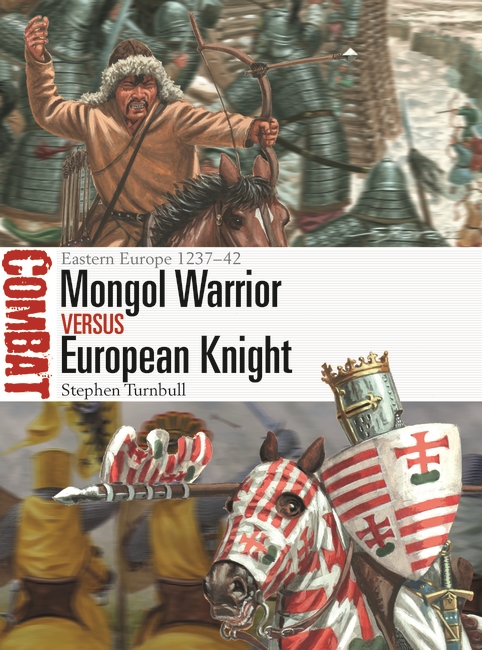
I have long been fascinated by the Mongol Empire and have written several Osprey books about the fierce horsemen of the steppes, so I was very excited when I was invited to write a book for the Combat series that pitted the Mongol warrior against the mounted European knight.
Having devastated and secured the main cities of the Russian principalities between 1237 and 1238, the Mongols rested before taking Kyiv in 1240. After a further pause to regroup separate invasions of Poland and Hungary were launched, although the purpose of the Polish thrust was simply to neutralize any of the Hungarian king’s supporters who could help him from that direction. Two battles in particular saw Mongols and knights come into contact in an open situation where a direct comparison could be made concerning their relative mobility and tactics. These were Liegnitz in what is now Poland, and Muhi in Hungary. The latter encounter is the only battle in the whole of medieval European history to have been described in a contemporary Chinese source.
In both those cases the Mongols triumphed, but the outcome was very different when the Mongols were face with fortified places, where the Mongols either came off worse or failed to gain a complete victory. For example, the city of Esztergom was built on a bend in the Danube and its citadel, the place of last stand, towered high above the city upon an impressive bluff. This was where the fiercest hand-to-hand fighting took place between the Mongols and the European knights. The high castle was under the command of a Spanish knight called Simon, who had command of many crossbowmen: the weapon group which the Mongols most feared. At Székesfehérvár too we see a contingent of Western European chivalry in action on Hungary’s behalf, and here the Knights Hospitallers drove the Mongols back after much fierce single combat. In spite of these reversals many Hungarian villages were violently destroyed, because there is evidence for extensive burning inconsistent with normal domestic life such as thick layers of ash, and the dating fits a Mongol surprise attack. Human skeletal remains were also found; in one village a child’s body retained in death the tip of a short sword or dagger.
The bitter experience of 1241 gave King Béla of Hungary the authority he needed to capitalize on the three factors of strength that had been helpful against the Mongols: the employment of foreign knights including the religious orders, the Danube barrier and the need for stone fortresses. Yet the Mongols retained their fearsome reputation, and the notion soon spread. In most of the sources the Mongols are referred to as “Tartars”, a uniquely European slur that conflated ‘Tatar’ — a word commonly used from Russia to China and Southeast Asia to identify the Mongols — with Tartarus, the Hell of Classical Antiquity. Contemporary European chroniclers only added to this impression of other-worldly invincibility by producing accurate accounts of the Mongols’ skills at warfare and then enhancing their narratives with contemptuous and exaggerated descriptions of the Mongols’ supposedly monstrous appearance and strange eating habits: matters that were derived not from observation but by associating the Mongols with demonic stereotypes in apocalyptic literature.
I last wrote about the Mongol invasions of Eastern Europe over 20 years ago when primary source materials for the campaign were not easy to come by. That situation has vastly improved within the past two decades, and recent archaeological investigations have added enormously to our knowledge. My research for the present book was hindered by the restrictions on travel imposed by Covid-19, but fortunately I had already visited all the places I intended to cover and had walked across every battlefield. As for written materials, I thank Stephen Pow for so generously sharing his own research into Muhi including translations of Chinese material. His work was conducted at the Medieval Studies Department of the Central European University in Budapest. This book is completely up to date, so I hope that historians can now make fresh judgements that are not influenced by past prejudice or racial stereotyping, thus allowing a realistic comparison to be made between the Mongol warriors and their European counterparts at the battlefield level.
If you enjoyed today's blog post you can find out more about Mongol Warrior vs European Knight here

Comments
You must be logged in to comment on this post. Click here to log in.
Submit your comment